China’s Renminbi Is Approved as a Main World Currency
/NewsThe International Monetary Fund on Monday approved the Chinese renminbi as one of the world’s main central bank reserve currencies, a major acknowledgement of the country’s rising financial and economic heft.
The I.M.F. decision will help pave the way for broader use of the renminbi in trade and finance, securing China’s standing as a global economic power. But it also introduces new uncertainty into China’s economy and financial system, as the country was forced to relax many currency controls to meet the I.M.F. requirements.
The changes could inject volatility into the Chinese economy, since large flows of money surge into the country and recede based on its prospects. This could make it difficult for China to maintain its record of strong, steady growth, especially at at a time when it economy is already slowing.
China’s leadership has made it a priority to join this group of currencies, naming it in October as one of their highest economic policy priorities in the coming years. The renminbi’s new status “will improve the international monetary system and safeguard global financial stability,” President Xi Jinping of China said in mid November.
In the months before the I.M.F. decision, China took several actions to make sure that the renminbi was more widely embraced. China did so partly to meet the I.M.F.’s rule that a currency must be “freely usable” before it can be included in this benchmark.
China and Britain have sold renminbi-denominated sovereign bonds for the first time in London, which has emerged as Europe’s hub for the currency. Even Hungary has announced plans to issue its own renminbi-denominated bonds as well, while the Ceinex exchange in Frankfurt has begun trading funds this month based on renminbi bonds. Preparations began to trade renminbi-denominated oil contracts in Shanghai, where copper and aluminum contracts are already sold.
Most important, China began changing the way it sets the value of the renminbi each morning. In doing so, it abruptly devalued the currency.
The entry itself into the special drawing right is mainly symbolic. But such broader moves toward greater financial transparency and easier trading — part of the process to meet the I.M.F. requirements — will have long term effects on the renminbi’s usage.
“There’s this obsession with the S.D.R., and it’s completely out of proportion to its economic impact, which is likely to be trivial,” said Randall Kroszner, a former Federal Reserve Board governor who is now an economics professor at the University of Chicago. “It may be that in the drive to get into the S.D.R., they may make changes that make the renminbi more attractive for international market participants.”
Copyright: The New York Times
Without carbon pricing, subsidies to renewables can be counterproductive
/NewsThe world’s economies have not been idle in the face of climate change. Companies and consumers are endeavouring to reduce their carbon footprint by investing in energy efficiency and changing their travel plans. Financial institutions are pressed to disinvest shares in fossil fuel industries by the “Keep it in the ground” campaign launched by NGOs and the media. In the last decade many countries, particularly EU Member States, have invested heavily in renewable energy sources such as wind and solar power, through generous feed-in tariffs, public tenders and mandatory renewable portfolio standards. China installed about 23 terawatts of new wind power capacity in 2014, almost half of the 53 terawatts installed worldwide. Rich countries have pledged to contribute up to $10 billion a year to the UN Green Climate Fund, with the aim to eventually reach $100 billion. This money is to be used to assist developing countries in adaptation and mitigation practices.
Spending money has proven easier than pricing carbon, as economists would prefer. It seems unlikely that the COP 21 participants will reach consensus on taxing carbon dioxide emissions or setting tradable emission permits. They seem more inclined to subsidise the reduction of greenhouse gas emissions than to penalise their production. Will this prove successful? Can we avoid pricing carbon by massive public support for decarbonised sources of energy? Economic analysis suggests that the answer is no.
In a recent paper we investigated the impact of subsidies to renewable sources of energy, particularly feed-in tariffs, on the energy mix. Solar and wind power sources are intermittent in that the electricity produced from wind turbines and photovoltaic panels varies over time and weather conditions. This makes power dispatching challenging because electricity is not storable on a large scale. Electricity must therefore be produced at the same time it is consumed. In other words, supply must match demand in real time. The fact that most consumers read a constant price in their electricity bill does not help: the price does not reflect variations in supply and therefore even consumers who could react to supply variability do not. Intermittency in electricity supply combined with a retail electricity price that is constant in time forces electricity providers to back-up new wind farms and PV installations with reliable sources of energy, mostly thermal power plants burning fossil fuel. The support to renewable energy through generous feed-in tariffs and ambitious renewable portfolio standards does increase investment in new wind and solar power production equipment. Yet it also reduces the cost of providing electricity on windy and sunny days. This translates into lower electricity prices in the wholesale market, as experienced in Germany when wholesale prices are sometime close to zero and even negative. Cheap electricity is not good for the climate, specifically because of the back-up necessity: consumers keep on consuming large quantities of electricity produced from fossil fuel to cope with intermittency. As long as our energy mix is not totally free of pollution, we must reduce electricity consumption, which requires higher electricity prices. By contrast, subsidies push energy prices down, and taxes up. The best way to both lower demand and produce a greener mix is to price greenhouse gas emissions from burning fossil fuel.
Cutting greenhouse gas emissions without slowing economic growth down is the main challenge of the next climate conference. Carbon-free sources of energy such as wind and solar power are certainly key solutions. We must keep on investing in renewables, installing windmills and solar panels. But not just by pouring in subsidies. Pricing greenhouse-gas emissions should be given priority to avoid the negative side effects of green subsidies on the energy mix.
The objective of the COP21 must be the reduction of greenhouse gas emissions at the least cost. The emphasis on renewable energy sources is a wasteful confusion of the means with the ends. We do certainly need innovative technologies to reduce greenhouse emissions at the lowest cost, but it should come with the right public policy.
Copyright: The Economist
The Importance of Lloyd’s Market Within the Energy Reform
/Our CoreThe iconic Lloyd’s building in London is one of the most emblematic and important places for the insurance industry and it is commonly known as the birthplace of marine insurance throughout the world. It is where vessels, oil rigs and the most complex drilling and construction projects both on land and sea, are protected.
By: Paulina Meza Photo: NRGI Broker

e wanted to enter the world of the petroleum risk assurance, that is why we interviewed Graciela Alvarez Hoth, CEO of NRGI Broker in the Lloyd’s building, in front of the iconic bell that sounds when an important event happens in this market. For some thirty years, Graciela Alvarez has specialized in the placement of insurance and re-insurance coverage of intricate oil related activities for various national and foreign companies.
When asked about the origin of Lloyd’s she replied … “It all started in the Edward Lloyd’s coffee house, as the birthplace of marine insurance during the lat 1600’s where traders and merchants would meet to insure their vessels and cargoes. Today the latest Lloyd’s building is still the focal point of the British insurance industry, but the merchants and traders have been replaced by the world’s most prestigious brokers and solvent insurers but still meeting in a single market place, under the Lloyd’s Franchise.
It is in Lloyd’s where we place the reinsurance through one of the companies of Grupo Vitesse, its reinsurance broker specialized in the full spectrum of risks as required by the energy industry in Mexico, an activity that nowadays has a high importance due to the global best practices which will become obligatory for all companies and corporations involved with contracts within the Energy Reform in our country.
Our expertise in the design of comprehensive insurance programs to cover the risks assumed by companies in the oil fields, and complex activities performed daily in this industry have allowed us to successfully face the moment of truth, when you have to attend a major claim, highlighting and demonstrating the importance of being well insured.
“The result of working with professionalism, efficiency, passion and loyalty over the years in the oil industry, has given us the expertise and capacity to respond as we enter a new era, not only to oil companies, but also to advise companies in all sectors of the energy market be it renewable or traditional.“
In NRGI Broker we have the commitment to exceed excellence in service, it is our best guarantee to meet the expectations of the most demanding customers who will need support in order to fulfill one of the most important requirements being established within the Energy Reform – being the best global practices in insurance”. Alvarez Hoth emphasized.
Acceptance of surety bonds in contracts of Third Call for Round 1
/Our CoreIn order to make contracts more attractive for bidding on the third call for Round 1, last november 11, the press release No. 129 was issued by the Ministry of Energy (SENER), Secretariat Finance and Public Credit (SHCP) and the National Hydrocarbons Commission (CNH) where they unveiled modifications to the conditions and the model contract for the extraction of hydrocarbons in 25 onshore fields in the states of Chiapas, Nuevo Leon, Tabasco, Tamaulipas and Veracruz.
In this newsletter is mentioned as one of the main changes, the use of the performance bond, in addition to the bank letter of credit as instruments to guarantee the obligations of the contractor during the evaluation period referred in clause 16.
The adjustments and changes are based on international best practices to provide legal certainty for operators and ensure greater investment. This achievement was the result of the efforts of a multidisciplinary team, which NRGI was actively involved in the negotiations to adapt a special surety bond wording bonds, at the request of the authorities, in order to have an effective instrument to give certainty on the debt recovery to the SHCP in case of non-compliance of the minimum work program, undertaken by new oil operators in Round 1 contracts.
This effort was headed by a surety company leader, who in turn lobbied with other mexican surety associations to achieve acceptance of the conditions of this surety bond in the contract bidding for the third call for Round 1.
Given the importance of this note the surety bond conditions are summarized in the following image:
It should be noted that the final version will be released on November 20, 2015 , the opening of proposals on December 15 and the declaration of the winners on December 17.
In NRGI Broker aware of the importance of this great achievement that expands opportunities for contractors of the Round 1 , we offer our extensive knowledge in the administration of guarantees under preferential conditions , and a recognized financial expertise to optimize the surety bond capacity.
Contact us, we are here to help you.
+52 (55)91772100
OECD Trims Global Growth Forecast on Emerging-Market Slowdown
/NewsThe OECD trimmed its global economic forecasts for the second time in three months as slower growth in emerging markets spilled over into countries such as Germany and Japan.
World output will expand 2.9 percent in 2015 and 3.3 percent in 2016, down from the 3 percent and 3.6 percent predicted in September, the Organization for Economic Cooperation and Development said in a semi-annual report published Monday.
“Global growth prospects have clouded this year,” the Paris-based organization said. “The outlook for emerging-market economies is a key source of global uncertainty at present.”
With Russia and Brazil in recession and China poised to deliver its weakest expansion in more than two decades, the economies that powered world growth in recent years are now slowing it down. Developed economies are feeling the brunt in the form of reduced demand for both commodities and manufactured goods.
China, Russia
The OECD barely changed its forecasts for Chinese output, pegging growth at 6.8 percent this year and 6.5 percent in 2016. Yet Brazil’s economy is now seen shrinking 3.1 percent this year and 1.2 percent next, compared with contractions of 2.8 percent and 0.7 percent predicted in September.
Russian gross domestic product is on track to drop 4 percent in 2015 and 0.4 percent next year, according to the report. Since the OECD didn’t give an estimate for Russia in September, that compares with a June prediction for a contraction of 3.1 percent in 2015 and expansion of 0.8 percent in 2016.
For emerging markets, “challenges have increased,” the OECD said. Should their situation deteriorate, “growth would also be hit in the euro area, as well as Japan.”
Japanese GDP will grow 0.6 percent this year and 1 percent next, according to the report. While the 2015 forecast is unchanged, the 2016 one has been cut from 1.2 percent.
“The outlook for Japan remains softer than in other advanced economies, despite an anticipated upturn in real wage growth,” the OECD said. “This reflects a larger drag exerted by weak external demand, especially in Asia, and strong fiscal headwinds.”
Refugee Crisis
The euro area’s expansion is now seen at 1.5 percent in 2015 and 1.8 percent in 2016, a reduction by 0.1 percentage point for each year.
In terms of the economy, Europe’s immigration crisis represents a much needed potential boost, the OECD said. It estimates that the influx of refugees may add between 0.1 and 0.2 points to growth in 2016 and 2017 thanks to extra government spending.
“Asylum seekers need not impose an unmanageable economic burden,” the OECD said. “If the refugees who stay are rapidly integrated into European society, they are likely to benefit the host countries.”
The U.S. expansion remains on track, with the OECD predicting growth of 2.4 percent this year and 2.5 percent in 2016. U.K. GDP is seen rising 2.4 percent in both years, little changed from September.
In the U.S., “output remains on a solid growth trajectory, propelled by household demand,” the OECD said. “Monetary policy remains very accommodative, which is consistent with stubbornly below-target inflation, subdued wage pressures and hints of downward pressure on inflation expectations.”
The OECD also offered its first glimpse of 2017, predicting a global expansion of 3.6 percent. It sees growth of 2.4 percent in the U.S., 1.9 percent in the euro area and 6.2 percent in China.
Copyright: Bloomberg
Oil price faces fresh downturn as Russia, Saudi tussle in Europe
/NewsA sales push by Saudi Arabia into north Europe’s refineries, a step into rival Russia’s backyard, piles fresh pressure on oil prices already struggling against oversupply.
Stung by Russia’s success in supplanting it in the giant Chinese market, Riyadh has embarked on a charm offensive in Europe, cutting its prices for December by more than it has in any other region to their lowest since 2009 during the financial crisis.
Saudi Arabian barrels rarely venture north of the Mediterranean, into the home turf for Russian, African and North Sea crudes. As a result, the kingdom’s success in luring away buyers of rival Russian Urals crude in Poland and Sweden is having an outsized knock-on impact on the market for a wide range of other crudes in the region.
Refiners averted a price drop from a similar build up of surplus oil in spring, snapping up cheaper crude to feed a surge in gasoline demand.
But this time there is a glut of refined fuel too. The crude
surplus is matched by an overhang in oil products which means refineries will not be able to come to the rescue by absorbing the extra.
“The first half of next year looks like a distinctly dangerous period for oil bulls,” brokers PVM Chief Executive David Hufton said in a note.
“It could be the period when tank tops are reached, leading to a price meltdown.”
Homeless barrels are again collecting in the Atlantic market, this time dragging crudes of all kind into a price war that is making $50 a barrel an increasingly impenetrable barrier for benchmark Brent futures.
“There isn’t any denying that the fundamentals are pretty bearish,” said Citi analyst Chris Main. “You’ve got an overhang of cargoes, and it will weigh on the benchmark.”
Saudi Arabia’s fresh European sales have displaced only a small amount of Urals, a heavy grade that has not faced much threat from the year’s excess that has centred on lighter U.S. shale oil. But they suggest a new front in the battle for market share between the two giant producers.
Saudi oil minister Ali al-Naimi on Sunday said demand for oil worldwide would soon reflect the attractiveness of current prices, noting Asia as key to the growth.
URALS HEADS EAST
Russia’s post-Soviet high of 10.78 million barrels per day (bpd) of oil production helped triple the discount of Urals versus dated Brent in just three months to reach 17-month lows.
And as Iran prepares to ramp up sales when and if Western sanctions are lifted next year, the overhang is only likely to aggravate further. BFO-URL-NWE
Discounted Urals cargoes are now muscling out British Forties crude, the largest of the four North Sea streams that make up the dated Brent benchmark.
At least three of the seven supertanker (VLCC) fixtures booked from the North Sea to Asia in November are loading Russian, rather than the North Sea crudes that typically sail.
“What is amazing is to see Forties is still pretty weak despite all the barrels that are going to the Far East,” Petromatrix analyst Olivier Jakob said. “If we did not have those VLCCs going to Asia, it would be a bloodbath.”
Forties price differentials are close to their lowest in five months, having traded at a discount to the dated Brent benchmark more often in 2015 than at any time in the last 20 years, and differentials for a string of crude oil grades now stand at multi-month lows.
Azeri crude price differentials have also more than halved over the past month to an annual low, while premiums for Nigeria’s Qua Iboe have also lost half their value.
A physical excess of more than 60 million barrels of Nigerian oil, and North Sea output at two-year highs, along with nearly full diesel, gasoil and jet fuel tanks in Europe that have already pushed cargoes into floating storage, will only add to the pressure.
Copyright: Reuters
The largest container lines are bulking up to try to withstand a fresh downturn
/NewsSince the financial crisis, the tide of recovery has not lifted all boats equally. But in few industries is that more true than in shipping. Demand for oil tankers has boomed: a combination of weak spot prices and higher futures prices, driven by the assumption that supply and demand for crude will eventually rebalance, has encouraged traders to hire tankers to store oil at sea and cash in on the price gap. Meanwhile, bulk carriers, which carry such things as iron ore and coal, have been hit by massive overcapacity, as Chinese demand for such commodities has collapsed.
Until the start of this year, the container-shipping business—which carries around 60% by value of all seaborne trade in goods—looked more like that for oil tankers. Rising global trade volumes, and firm steel prices that made it worthwhile for owners to scrap old ships, had kept capacity in check, and container-freight rates seemed to be steadying. As recently as August last year, demand for container shipping was so high that BIMCO, an industry association, was warning of a capacity shortage. And at the start of this year Drewry, a shipping consultant, forecast a bumper year: owners of boxships would rake in profits of up to $8 billion in 2015, they thought, helped by low fuel costs.
But since then the industry has been rattled by renewed weakness in freight rates, prompted by a fall in the volume of seaborne trade. The cost of sending a container from Shanghai to Europe, for instance, has almost halved since March, according to the Chinese city’s shipping exchange (see chart). And the absence of the usual pre-Christmas pick-up is worrying both analysts and investors, according to Rahul Kapoor of Drewry. On October 23rd Maersk, the world’s largest container line, told investors to brace themselves for a fall in profits when it announces its third-quarter figures on November 6th.
Some of the shipping lines’ problems are due to factors beyond their control. At a time when weak trade volumes should be prompting them to scrap more old vessels, the steel price has slumped. So, 60% fewer boxships have been scrapped so far this year compared with the same period last year. However, some shipping groups have made a rod for their backs by taking on too much debt. This also makes it hard for them to scrap unprofitable vessels, since their balance-sheets would struggle to cope with the resulting writedowns.
Worse still, critics say, is that shipowners have embarked upon a building boom. Orders for new container ships were 60% higher in the first five months of this year, than in the same period in 2014, according to Alphaliner, a data provider. In June Maersk ordered 11 ships that can each carry up to 20,000 standard-sized containers, in a deal worth $1.8 billion. Next week Hapag-Lloyd, another operator, plans to raise $300m by floating on Frankfurt’s stock exchange, to help pay for six giant new ships, ensuring that it stays in the game.
Hapag-Lloyd has had to delay its IPO a week because demand for the shares has been so weak. And investors have good reasons to be hesitant. All the extra capacity should depress rates further, adding to the industry’s problems. But for those lines that can afford it, ordering big, new ships may be a sensible reaction to falling freight rates. There are still sizeable economies to be gained from increasing the size of vessels. As Hapag-Lloyd’s boss, Rolf Habben-Jansen, recently pointed out, a ship capable of carrying 19,200 containers needs half as much fuel to shift each box by one mile as a vessel with a capacity of 4,900.
As a result, the capacity of the largest container ships afloat has risen from around 14,000 before the financial crisis to just under 20,000 today—and boxships are taking the place of oil supertankers as the giants of the seas (see diagram).
Among the winners from this flight to scale will be the world’s largest three lines—Maersk, Mediterranean Shipping Company (MSC) and CMA CGM. They have the industry’s lowest costs, because they have the biggest ships and the cheapest finance costs. They also have the advantage of being based in Europe: demand to transport goods across the Atlantic has remained strong. Analysts expect the big three to stay profitable over the next few tough quarters, even as their revenues fall.
Maersk and MSC have also formed an alliance, 2M, to save more money by sharing space on their ships on transatlantic and transpacific routes. As the strongest lines get stronger, through fleet renewal and alliance-building, smaller lines that cannot cut their costs quickly enough or obtain cheaper finance to build bigger ships will suffer. China’s two biggest lines, China Shipping Group and Cosco, were losing money before the current downturn started. They have recently swung back into profit, but only thanks to generous state aid to help them scrap old vessels. The government regards it as vital to have a national merchant fleet, so it will not let the two go to the wall. But it plans to merge them to save money, and to stamp out corruption at Cosco which, according to internal documents leaked this week, is another reason for its poor performance.
The hardest hit, however, will be the smallest container lines that do not enjoy state backing. Several smaller Japanese and South Korean operators, in particular, are sailing close to bankruptcy, analysts say. The pressure to cut costs is also hitting container lines’ suppliers; several shipping-services firms in Denmark and container-logistics firms in Britain have gone bust in the past year.
The move towards ever bigger vessels poses a risk to ports which lack the capacity to handle them. International trade is shifting towards big, centralised hubs. And smaller ports, somewhat like smaller airports when the hub-and-spoke model for long-haul flights became dominant, are losing many of their direct connections. This has already happened at Portland on America’s west coast, which is no longer served by any regular container routes.
To avoid this fate, port authorities in some countries are now investing heavily in upgrading their infrastructure, to handle larger vessels. Recent development projects in Liverpool and London have already brought traffic back to those British ports. In a similar vein, Indonesia announced details of a $3.6 billion project to upgrade its container ports earlier this month, to ensure it does not lose routes to Singapore, the nearest big hub.
As falling volumes and weak shipping rates force the industry to consolidate, with fewer, bigger lines sailing ever-larger ships to fewer, bigger ports, the resulting gains in efficiency should mean cheaper transport costs, bringing benefits for consumers in many places. That is, unless the consolidation goes too far, and the surviving lines are able to jack up their rates. The 2M alliance now controls more than 28% of global container-shipping capacity, and almost a third on the Europe-to-Asia route.
Regulators are already worried about the impact on competition: in June last year, the Chinese authorities vetoed plans for a larger alliance, called P3, that would have involved all three of the world’s biggest lines. Cheaper container rates are a boon for firms engaged in international trade, and their customers. But there is a risk that the benefits will not last.
Pemex poised to import first test cargo of WTI in swap with U.S.
/NewsMexican national oil company Pemex is focused on importing U.S. West Texas Intermediate (WTI) crude as part of a historic oil swap with the United States, a top company executive said on Friday.
Pemex said earlier this week it had received a year-long license from the United States to import U.S. light crude in exchange for exports of Mexico’s heavier crude oil.
The swap will mark the first time in decades that Mexico’s aging refineries, designed decades ago to run lighter crudes, will process foreign oil.
It also marks a milestone in loosening a contentious U.S. ban on exporting domestic oil dating back to the 1970s Arab oil embargo.
The license allows Pemex’s commercial arm, P.M.I. Comercio Internacional, to import U.S. light crude to process in its refineries from October, capped at 75,000 barrels per day (bpd).
Jose Manuel Carrera, Pemex’s director of corporate partnerships and new business, said in an interview that he expects the first shipment to arrive before the end of the year and at a volume of between 200,000 and 300,000 barrels.
“The crude we like best, that we’re most enthusiastic about, is WTI,” Carrera said.
The first shipment will be used to test compatibility with Pemex’s domestic refining system, he said, and the tests should conclude by the first quarter of next year but could happen sooner.
“What we’ve already evaluated is that running WTI gives Pemex a major advantage to improve the performance of our refineries,” he said.
Running a lighter crude mix should allow Pemex to produce more higher-value fuels like gasoline and diesel, and less fuel oil, which Mexico no longer uses as the main input to generate electricity.
West Texas Intermediate is a light, sweet blend of crude and the main benchmark for U.S. crude oil prices.
Carrera, who formerly led Pemex’s commercial arm, said he does not anticipate any significant additional investment needed to modify distillation towers in preparation for the lighter crude mix.
Carrera said Pemex has analyzed other crude grades, but declined to name them.
“We’ve evaluated others but our favorite right now is West Texas Intermediate because it has chemical properties that we really like,” he said.
Pemex has previously said that the first refineries to receive the shipments of light U.S. crude will be its Tula and Salamanca plants.
Carrera declined to name any U.S. companies involved in the swap.
Copyright: Premian Shale
Oil at $50 Is ‘Gift to World’ as Abu Dhabi Sees Higher Prices
/NewsOil at $50 a barrel is a “gift to the world” as prices should be low enough to spur economic growth, according to the head of Abu Dhabi’s Department of Economic Development.
Prices will probably be at $60 next year, after hitting bottom at $45, Ali Al Mansoori, the department’s chairman, said in an interview Sunday in the capital of the United Arab Emirates, the fourth-largest oil producer in the Organization of Petroleum Exporting Countries. Benchmark Brent crude has dropped 16 percent this year amid a global oversupply and was trading Monday at $47.98 a barrel at 11:55 a.m. London time.
“It is a gift to the world that oil has dropped to $50,” Al Mansoori said. “Would we like for oil to stay at $50? Absolutely not. We would like oil to go to $70, $80, but beyond that I think it would hurt the economic growth.”
Oil demand growth will climb to a five-year high of 1.8 million barrels a day this year before slowing next year amid a weaker outlook for the world economy, the International Energy Agency forecast in its October market report. The market will probably remain oversupplied through 2016 as Iran exports more crude, should international sanctions be eased, it said.
‘Win-Win’
Oil at $50 to $60 a barrel is a “win-win situation” because it benefits consumers and producers alike, Al Mansoori said. For buyers, “it’s an opportunity for them now to use it as much as possible to set up their policies for economic growth in the next five years because ultimately the commodity is scarce.”
Declining oil prices will mean Abu Dhabi’s gross domestic product growth will be little changed next year, Al Mansoori said. The emirate is doing what it can to expand the economy, but “if we don’t, we take next year as a challenge and turn this challenge into opportunity and turn 2017 with strong growth,” he said.
Major projects in Abu Dhabi will continue. The Midfield Terminal Building at the Abu Dhabi International Airport is still slated to open in 2017, while a branch of the Louvre museum will open next year, Al Mansoori said. In addition, Al Mansoori said he’s meeting with architect Frank Gehry next month in Los Angeles to review the final design for the Guggenheim museum being built in Abu Dhabi, and move ahead with signing the museum’s contract.

Latest News
 Breaking Barriers and Building the Future18 March, 2025
Breaking Barriers and Building the Future18 March, 2025 Fundamental factors to strengthen Pemex12 August, 2019
Fundamental factors to strengthen Pemex12 August, 2019 Offshore Project Development: The Road to First Oil26 July, 2019
Offshore Project Development: The Road to First Oil26 July, 2019
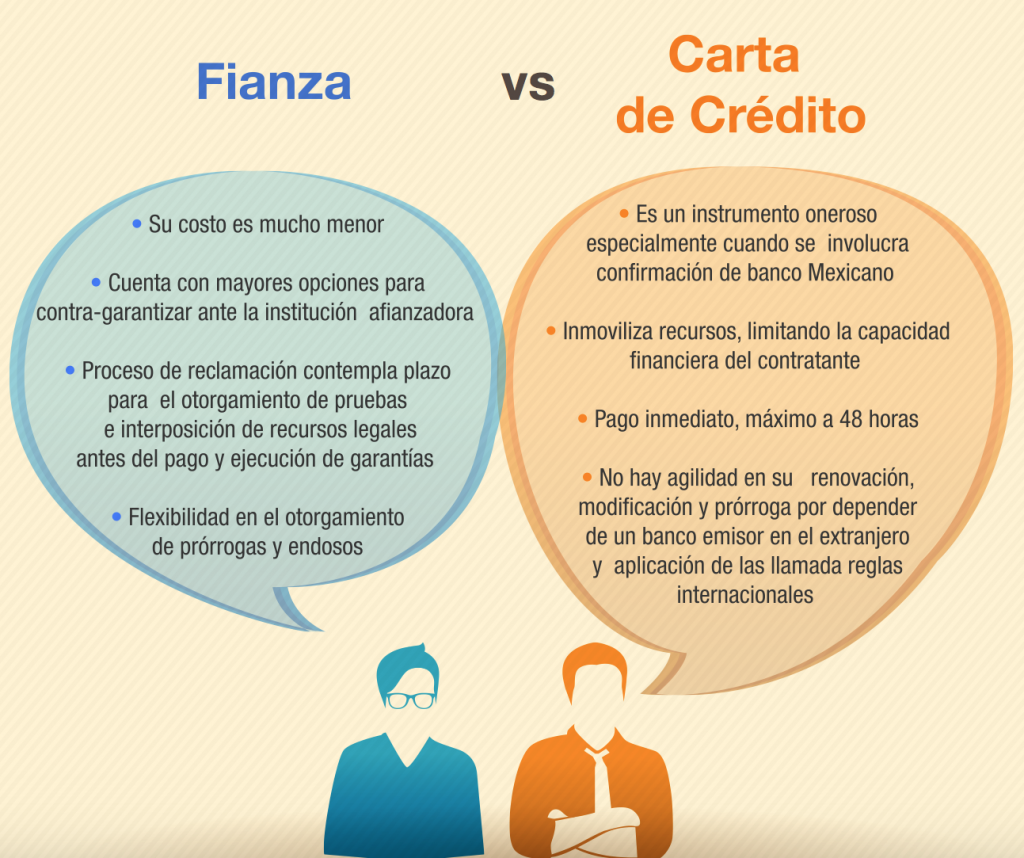
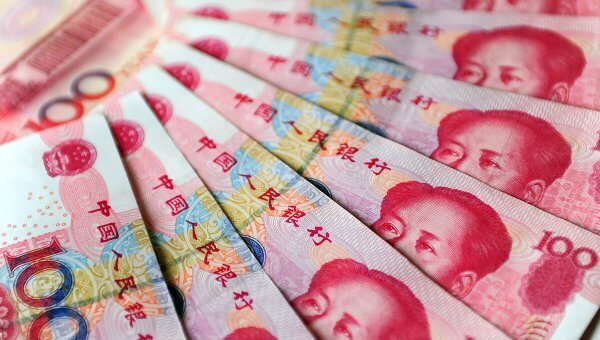


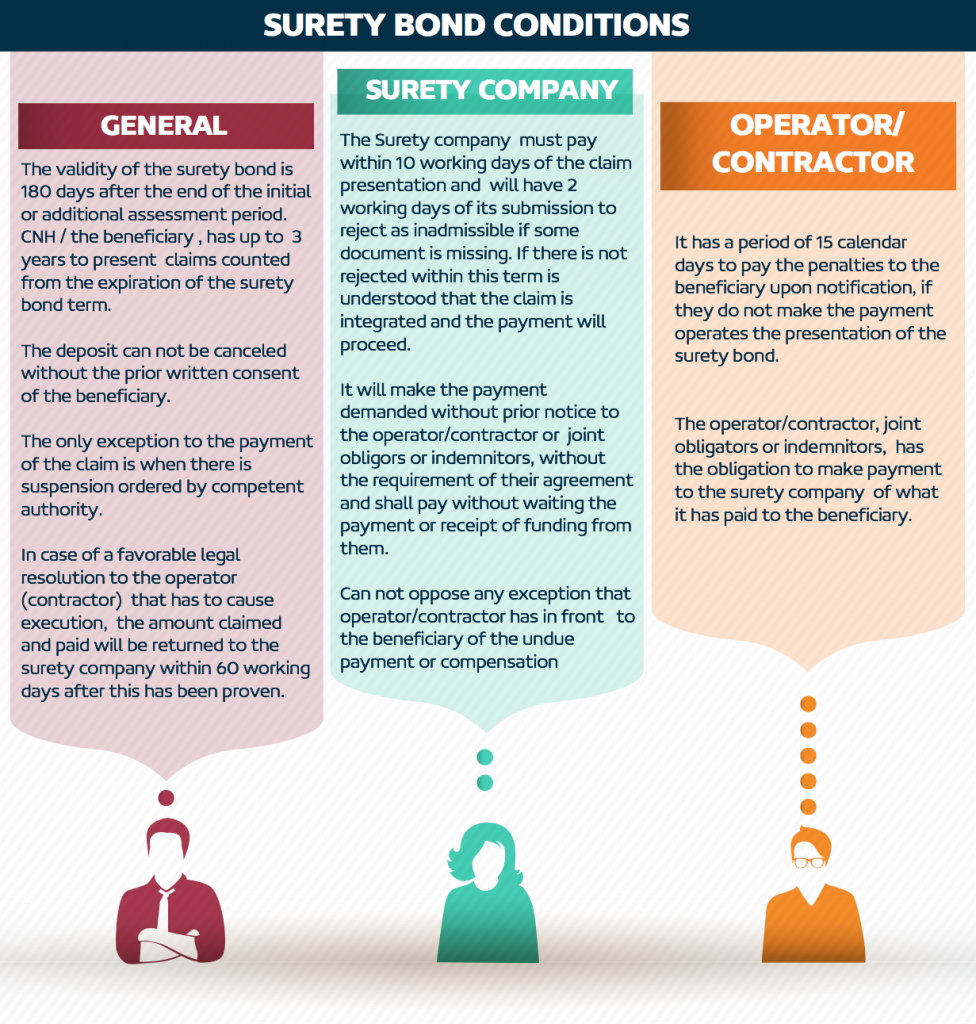

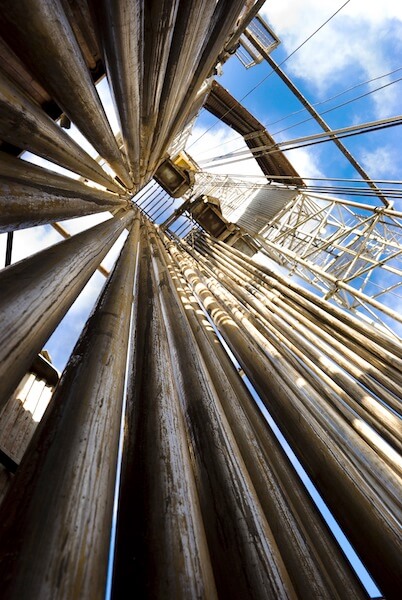
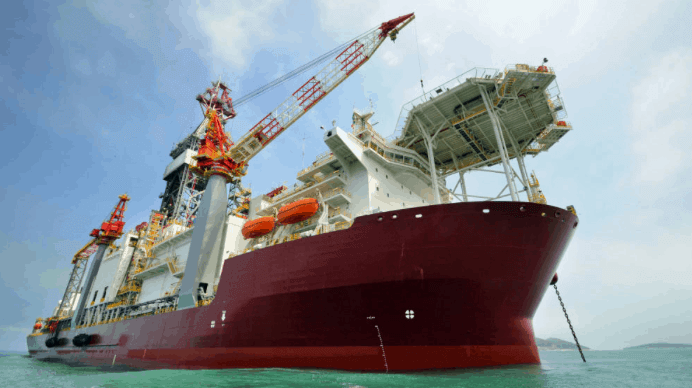 Copyright:
Copyright: 
